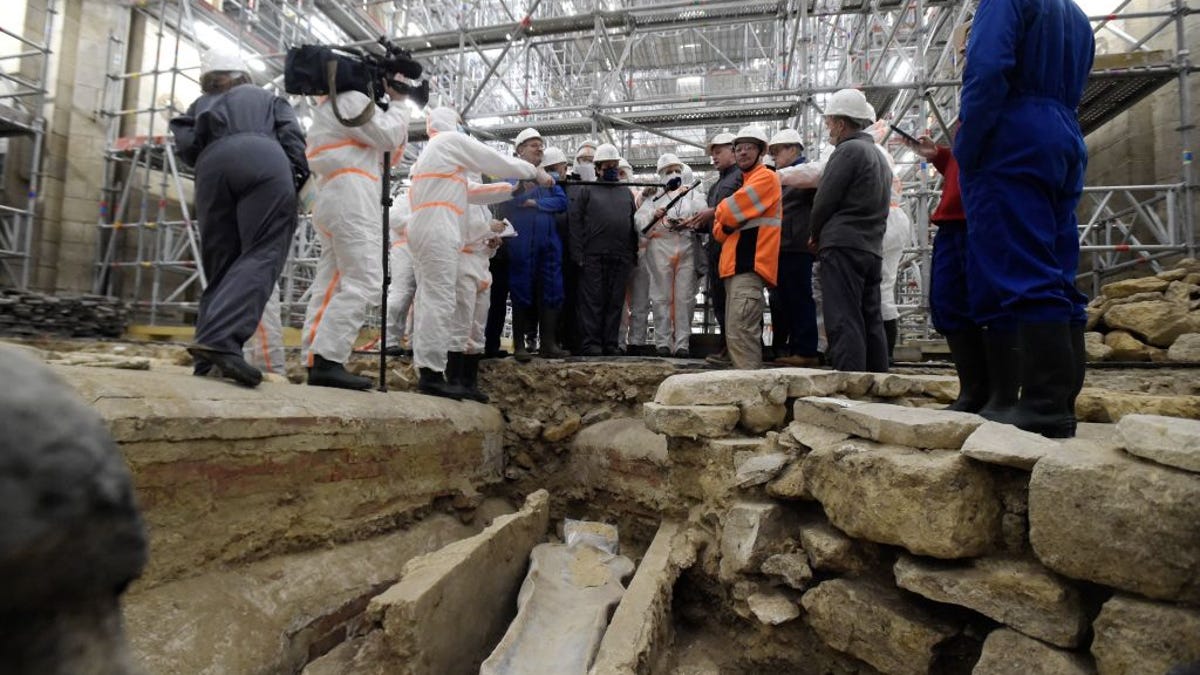The Mystery of the Notre Dame Sarcophagus Is About to Be Solved
A lead sarcophagus from the 14th century was found last month under the Paris cathedral.

France's culture minister visits the Notre Dame Cathedral archaeological research site after the discovery of a 14th century lead sarcophagus.
When a devastating fire at Notre Dame Cathedral destroyed the roof and spire in 2019, an archeological excavation was ordered before full restoration could begin. A month after the archeological survey began in February, the National Institute for Preventive Archaeological Research revealed it had discovered a lead sarcophagus dating back to the 14th century.
Now, we're about to find out what's inside. French archaeologists said on April 14, a day before the three-year anniversary of the fire, that they'll be opening the sarcophagus "very soon".
A fire in 2019 badly damaged Notre Dame, the Gothic cathedral in Paris that dates from the 12th century.
They'd already examined it using an endoscopic camera. According to Phys.org, the camera revealed the top half of a skeleton, a pillow, fabric and several unidentified objects.
Carbon dating could be used to determine the age of the skeleton, the report said, while scientists will also be able to identify its gender and former health.
Read also: A Visual History of Notre Dame de Paris
It's probable that the sarcophagus contains the remains of a high dignitary, given the importance of their final resting place, according to the National Institute for Preventive Archaeological Research.
"The entire right-of-way is covered by a stone floor, dated no later than XVIII century. It includes many burials and is based on levels of occupation dating from the XIV century," said the institute's March press release describing the finding. "Among the graves uncovered, a fully preserved anthropomorphic sarcophagus made of lead was uncovered."

